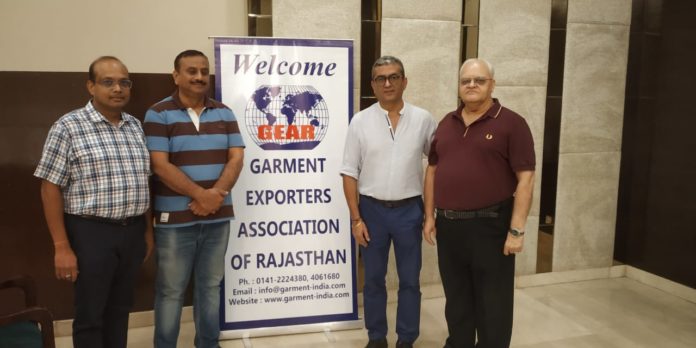• In Rajasthan, readymade garments had their highest exports growth at INR 2,078 crore in 2018-19 and increased to INR 2,561 crore in 2021-22
• Labor intensive industry is facing losses due to the imbalance in the rebate scheme
Jaipur | Rajasthan is the largest manufacturer of garments and textiles, and in total, the state’s garment manufacturing sector is worth INR 2,500 crores. Jaipur has emerged as a major hub of garment manufacturing in India. According to industry estimates, there are currently 2 lakh machines churning out 20 lakh pieces per day amounting to a daily turnover of INR 5 crores. Currently, this industry provides employment to 5 lakh people in Jaipur only.
India currently exports worth more than USD 44 billion of which USD 16 billion pertains to apparel and garments exports. Apart from the huge exports, this industry employs around 4.5 crore workers and is expected to be worth more than US$ 209 billion by 2029.
However, the garment exporter is deeply concerned about a loss of 15% of their margins due to Rebate of State and Central Taxes and Levies” (RoSCTL). As a result, Rajasthan garment exporters also foresee a decline in export competitiveness, like their other counterparts across the country.
RoSCTL was launched with the intention of making India’s textile industry competitive and strengthening its exports. However, certain changes were made to the Scheme in September 2021 and its current form is eroding the export margins of the domestic textile industry. These changes are acting against the government’s intention of benefitting exporters and are instead benefitting importers. This defeats the very purpose and intent of this entire scheme of promoting the government’s stated policy of ‘Make in India’ for the world.
Mr. Vimal Shah, President of Garment Exporters Association of Rajasthan (GEAR), said: “The textile industry wants the government to restart cash reimbursement instead of these tradeable scrips, as these scrips are trading at 20% discount. These scripts are sold by exporters to importers, who in turn can pay their import duty with these purchased scrips as an alternative to cash import duty payments. This is resulting in substantial cash transfer from exporters to importers.”
Mr. Vijay Jindal, Member, Export Promotion, AEPC & President, GEMA, said: “RoSCTL scheme provides rebate against the taxes, levies, etc. already paid by the exporters on the inputs. This rebate has been converted into scrips that are tradable i.e. exporters can sell scrips to the importers and importers, in turn, can pay import duty with these purchased scrips as an alternative to cash import duty payments. While it was in discount earlier also, but now the discount has gone up from 3% to about 20% discount on the scrips. This discounting of scrips benefits importers, who are taking undue advantage at the cost of exporters.”
Based on estimated calculations, of the total USD 16 billion in apparel exports, around 5% is reimbursement, which is roughly INR 6,000 crore. At a broad level, given a discount of 20-25% on this, there is a direct hit of around INR 1,500 crore on the feeble margins of companies operating in the apparel sector.
The Scheme’s intention was to make India’s textile sector competitive against other low-cost countries such as Bangladesh and Vietnam (due to low labor and manufacturing costs). The demand has been in line with the government’s intention, which was always to reimburse the exporters but due to the discounting of scrips, the purpose and intent of this entire scheme are defeated. In its current form, the discounting of scrips benefits importers, who are taking undue advantage at the cost of exporters. This defeats the very purpose and intent of this entire scheme as instead of promoting the government’s stated policy of ‘Make in India’ for the World.
If the government does not immediately make amendments to the RoSCTL structure, there is a concern that the industry may lose its competitive edge due to cost inefficiencies. The lack of support would once again shift the demand to other low-cost countries.




